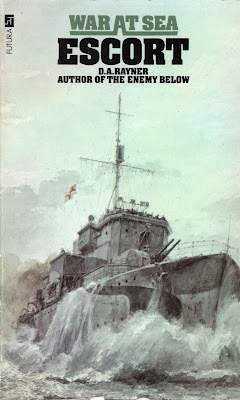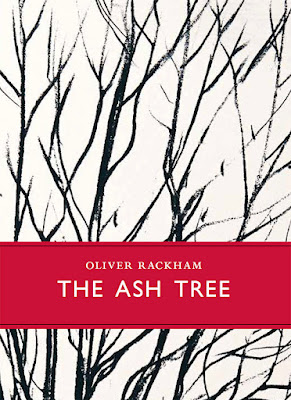Luxemburg and Liebknecht were two of the most respected, brave and leading German revolutionary socialists in the early twentieth century. Their opposition to World War One and their principled politics had put them at the head of the German Revolution that exploded in November 1919. In the German revolution lay the hopes for the spread of the Russian Revolution. That is the context for the "great tragedy" of their deaths and the particular bestiality of their murders.
Gietinger does not go into great detail about the revolution, or indeed the politics of Luxemburg and Liebknecht. Instead he is mostly concerned with exposing the lies and myths that were built up around the killings. In doing so challenges some of the myths of left and right, particular examining the extent to which the left-wing, but not revolutionary, German Social Democrats were culpable in the murders.
Gietinger begins with the revolution which grew rapidly in the context of war fatigue, economic crisis and mass hunger and poverty. With the revolution grew, immediately, powerful far-right counter-revolutionary forces. Many of these were led and made up of former veterans and where heavily armed. These groups, some of which were known as Freikorps, set about systematically fighting the revolution. These organisations, and the individuals who made them up, often became the basis for Nazi stormtrooper forces. Their anti-Semitism, hatred of working class organisations and fear of revolution meant they were easy converts to the fascist cause.
These were the individuals who captured Rosa Luxemburg and Karl Liebkneckt and took them to the Hotel Eden, a HQ for the counter-revolutionaries. In captivity there it must have been clear to both that they were facing likely death. I was touched to learn that Luxemburg spent her last hours reading Goethe's Faust. Both were taken from the Hotel, beaten and killed. Luxemburg's body was thrown into a nearby canal, where a monument stands to this day.
In many ways who exactly killed Luxemburg and Liebkneckt doesn't matter. They were victims of a vicious counter-revolution that wanted to destroy the German revolution and its socialist leaders. But as Gietinger shows, the individuals do matter, because the fact that the real murderers identify was obscured for so long implicates many senior political figures in her killing - including individual politicians who played a role in post-War German politics. It also matters because Hermann Souchon who very likely was Luxemburg's real killer, lived until he was 87 in Germany, without ever facing criminal charges.
But also important is the extent to which Gustav Noske, a senior figure in the German government and a leading member of the German Social Democratic Party, ordered the killing. Noske, a "pre-fascist" figure according to Gietinger, certainly "tacitly approved" of what had been done. Noske who, after World War Two, said "I cleared away the scum and cleaned up as fast as was possible", "openly wondered", "whether anyone was going to put the troublemakers out of action". Waldemar Pabst, who commanded the counter-revolutionary unit that ultimately killed the two revolutionaries, was according to Pabst close to Noske. "He was Pabst's accomplice, and Pabst was his". Noske "deliberately and against the counsel of his advisors closed down the investigation, not wishing light to be shone on this momentous crime".
Gietinger shows how other figures helped witnesses escape, destroyed evidence and helped those accused of the crimes. Not all of these were pre-fascists. Post World War Two, the German state certainly ensured that the reinvestigation of the murders was hampered, confused and the trials that did take place allowed the murderers to be framed as victims. As such this book is a condemnation of the post-war German government as much as the far-right and Social Democrat leaders at the time. And while other Social Democrats didn't quite have blood on their hands like Noske, Gietinger reminds us that:
Ebert, Scheidemann, Heine and Landsberg (who probably knew nothing of Noske's approval), proved weak in the face of the military justice system - doubtless because they, like Noske, had a soft spot for the military, whereas the names of Luxemburg and Liebknecht aroused pure scorn in their hears. Rid of their (justified) fears of a social revolution that would challenge not only war and capitalism (which did not bother the SPD leadership) but also 'Reich and nation... the former People's Deputies now believed they could return to business as usual, after re-establishing 'order' in alliance with the enemies of the republic.
As Gietinger concludes, "they would not gloat for long". The opening of the door to counter-revolutionary forces with the tacit approval of the SPD helped ensure that the Nazi movement had a strong base to grow from. After Luxemburg and Liebkneckt's death, tens of millions more would pay the price for the SPD's betrayal.
Klaus Gietinger's book is a harrowing read. It is an insight into the nature of the Freikorp movement and their fascist views, their violence and their terrorism. It is also a warning about what happens if socialist movements are not built to be able to stand up to counter-revolutionary movements. It is also an exemplary work of documentary history, a brave and original exploration of a complex series of events. I highly recommend it, not just to students of the German Revolution, or socialists, but to those trying to understand the trajectory of German history in the 20th century.
Related Reviews
Broué - The German Revolution 1917-1923
Pelz - A People's History of the German Revolution
Campbell - A Rebel's Guide to Rosa Luxemburg
Luxemburg - Reform or Revolution
Luxemburg - The Junius Pamphlet







